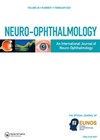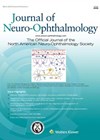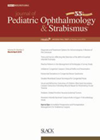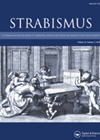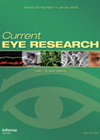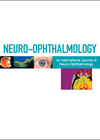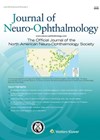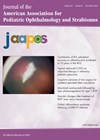
Journal Reviews
Comparison between findings in ‘active’ or ‘healed’ giant cell arteritis
Giant cell arteritis (GCA) is the most common systemic vasculitis in older people and can cause devastating sight loss if untreated. Temporal artery biopsy is often relied upon for diagnosis by ophthalmologists, with a positive biopsy result indicating whether the...
Referral patterns and pathways for intracranial hypertension
The authors present a retrospective case review of individuals with suspected raised intracranial pressure (ICP) over a 12-month period a single tertiary neuro-ophthalmology centre. Cases were categorised into four groups based on examination by neuro-ophthalmology; 1) referred after identification of...
Burden of caregiving for children with eye diseases
This review was conducted to examine the existent literature and characterise the psychological impact of caregiving for children with various eye diseases. The factors associated with the burden of caregiving were discussed in the context of each eye disease identified....
Prismatic contact lens correction vs prismatic glasses
The aim of this study was to verify if diplopia could be corrected by applying soft directional prism contact lenses, to compare effectiveness of diplopia correction, comfort and quality of vision with these contact lenses compared to prism glasses. This...
Association of strabismus with functional impairment in children in the USA
In this study the authors aimed to (1) determine if strabismus is associated with clinically significant functional impairment, (2) identify specific domains of impairment and (3) examine predictors of impairment among children aged 5-17 years. Data were extracted and analysed...
RCT of unilateral vs bilateral surgery for lateral incomitance in exotropia
The purpose of this study was to evaluate and compare the surgical outcomes in the management of lateral incomitance with regard to ocular alignment and change in lateral incomitance in cases of bilateral vs. unilateral strabismus surgery. This was a...
Randomised controlled trial for large-angle exotropia surgery
The purpose of this study was to investigate single eye, single setting surgical options to correct 80–90PD of exotropia with two options of muscle transplant and suture hang-back recession. There was retention of anatomical limits of 6mm resection for medial...
Clinical predictors of proliferative sickle cell retinopathy
Sickle Cell Disease (SCD) is an inherited disorder resulting in production of Haemoglobin S (HbS), which aggregates in conditions of hypoxia, acidosis or hyperosmolarity. This leads to vascular stasis, thrombosis and ischaemia. The authors present a cross-sectional study (45 consecutive...
Relationship between diabetic retinopathy and cerebrovascular reactivity changes
Cerebral micro-angiopathy caused by diabetes can manifest itself as an impairment in cerebrovascular reactivity. Transcranial doppler ultrasound (TCD) is a cost-effective and non-invasive way to measure the cerebrovascular reactivity. This study aimed to assess the relationship between the grade of...
Comparison of thrombolysis and conservative management in acute retinal ischaemia
The authors present a retrospective cohort study of individuals presenting with acute, painless, monocular vision loss and diagnosed with acute retinal ischaemia. Reasons for exclusion were iatrogenic aetiology, transient vision loss, missing initial visual acuity data, more than 16 hours...
A review of patient education interventions within paediatric ophthalmology
This systematic review aimed to review published literature around the content, effectiveness and outcomes related to interventions educating patients within paediatric ophthalmology. A single database was searched from inception to June 2022. Interventions aimed at either the patient or carers...
Monocular eye closure following treatment of intermittent exotropia
The purpose of this study was to evaluate the short- and long-term status of monocular eye closure after surgical treatment of intermittent exotropia and to determine whether the status at short-term postoperative follow-up duration remains or can change after long-term...

